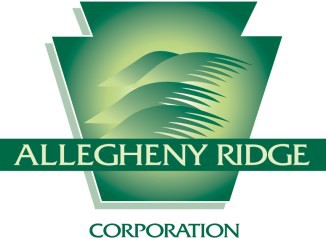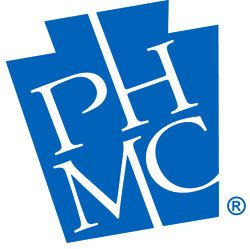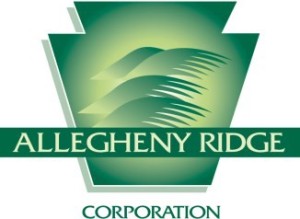Altoona Cultural Resources Essentials Focus: Community Preservation Workshop
| Where: | Altoona Heritage Discovery Center 1421-1427 12th Avenue
Altoona, PA 16601 |
|---|---|
| When: | Thursday, September 18th 2014, 9AM–4PM |
| Partners: | Allegheny Ridge Corporation
Pennsylvania Historical & Museum Commission’s Bureau of Historic Preservation Preservation PA |
| Sponsor: | Middle PA Chapter of the American Institute of Architects (MPCAIA) |
| Cost: | Free admission for the general public
$60 for AIA architects seeking CES credit |
| Lunch: | Provided for paying attendees
$10 for the general public |
| RSVP: | Please email cpequignot@alleghenyridge.org by NOON Monday, September 15th |
SCHEDULE OF EVENTS:
9:00–9:05am WELCOME by Jane Sheffield and Kira Heinrich
9:05–10:00am Historic Preservation as Community Asset Management (1HSW|LU) by Bill Callahan:
Historic preservation isn’t about preservation advocates chaining themselves to buildings to “stop progress.” Instead, communities can leverage historic resources as part of larger sustainable investment and development strategies. This session will explore the essentials of economic development in a context of historic preservation, debunk some myths about preservation and development, and outline steps communities can take to benefit from the economic opportunities provided by 21st century preservation practice.
10:00-11:00am A Case Study for Implementing Focused Planning (1HSW|LU) by Rob Pfaffmann, Pfaffmann+Associates, 4th River Development, and Fourth Economy:
This presentation will explore the recently completed economic development strategy for Downtown Altoona. Born of a PA Act 47 economic recovery grant and recently completed comprehensive plan, the goal of “Ahead of the Curve” is to improve the economic health of downtown Altoona by revitalizing and increasing its residential capacity, in part through the preservation of historic buildings and sites. Coordinating transportation and parking, identifying gap finance strategies, and providing connectivity throughout the urban core are crucial to this revitalization effort. By looking at the physical and market capacity in a series of detailed real estate case studies, a stronger argument can be made for funding Historic Preservation through collaborative private and public investment.
11:00 –11:15am BREAK
11:15–12:15 pm The National Register: No, Actually We Do Not Care What Color You Paint Your House (1HSW|LU) by Keith Heinrich:
The National Register is one of the more popular yet misunderstood federal historic preservation programs. This session will discuss the basics of the National Register program, including the criteria for evaluation, aspects of integrity, how the program is administered in Pennsylvania, what information is needed to evaluate and list properties, and timelines for the listing process.The session will cover what the National Register does and does not do, debunking common myths. Participants will learn how archaeology fits into the program.
12:15 –1:15pm LUNCH
1:15–2:30 pm An Introduction to Preservation Incentives: Making ‘Cents’ of Tax Credit and Grant Programs (1.25HSW|LU) by Karen Arnold:
Learn more about the available programs that make preservation projects work. Federal historic preservation tax credits and the Pennsylvania Historic Preservation Tax Credit program can be useful tools in rehabilitating vacant or under-used historic properties. Attendees will hear about the requirements and procedure to apply for these programs. The PHMC also provides grant funding to historic buildings owned by nonprofit organizations and local governments who are ineligible for the tax credit programs. The Keystone Historic Preservation Grant program supports both construction and predevelopment projects for National Register–eligible or–listed properties. The session will culminate with an overview of the Secretary of the Interior’s Standards for Rehabilitation, the underlining tenets that guide all projects.
2:30–2:45pm BREAK
2:45–4:00pm Rehabilitation Case Studies: Red Light, Green Light (1.25HSW|LU) by Erin Hammerstedt:
Using examples from communities across Pennsylvania, this session will focus on interpretation of the Secretary of the Interior’s Standards for Rehabilitation. The case studies will provide practice identifying character defining features and making decisions about the appropriateness of a variety of designs, actions, treatments and materials that will be useful to those involved in rehabilitation projects.
4:00pm WRAP-UP and Thank you by Jane Sheffield and Kira Heinrich
EXHIBITS:
 PHMC-BHP, Tom Held “CRGIS Overview Personal Tutorials”:
PHMC-BHP, Tom Held “CRGIS Overview Personal Tutorials”:
Learn about PHMC’s Cultural Resources Geographic Information System through a one-on-one tutorial with PHMC’s GIS Staff. The CRGIS allows users to access information about recorded cultural resources in Pennsylvania.
Preservation PA, Erin Hammerstedt “Project PATH Tutorials”:
Learn about Preservation PA and PennDOT’s online tool, Project PATH, through a one-on-one tutorial with Preservation PA staff. Project PATH is a new program that aims to improve PennDOT’s approach for seeking consulting parties and encouraging public participation in transportation projects. Through the Project PATH program, interested individuals are able to access online all new Section 106 documentation for projects programmed on the State Transportation Improvement Program (STIP).






Leave a Reply